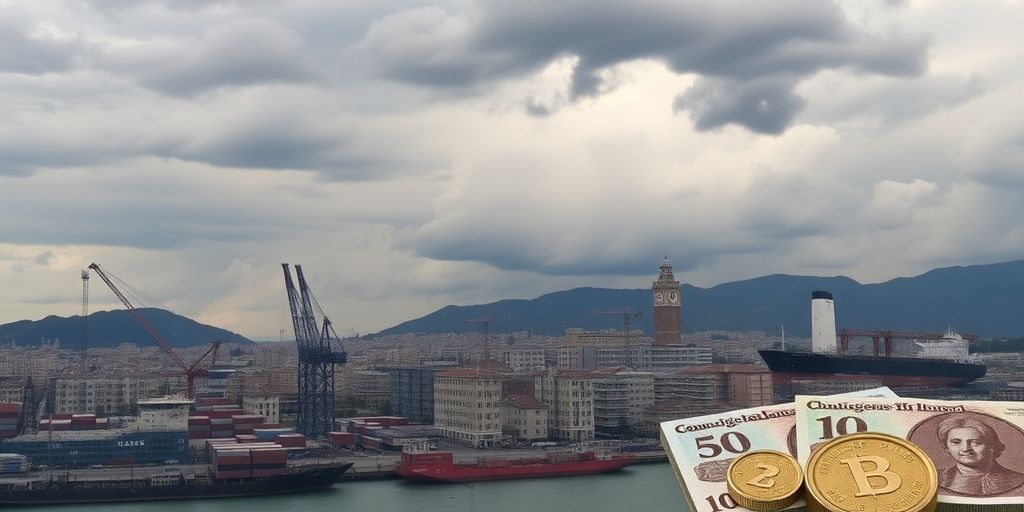The recent announcement by U.S. President Donald Trump to impose sweeping tariffs on imports has sent shockwaves through the Balkan economies. With tariffs reaching as high as 37% for Serbia, regional leaders are grappling with the potential fallout from this aggressive trade policy.
Key Takeaways
- Tariff Rates: Serbia faces the highest tariff at 37%, followed by Bosnia and Herzegovina at 35%, and North Macedonia at 33%.
- Economic Impact: The tariffs threaten to disrupt trade, particularly in key sectors like automotive and defense.
- Political Ramifications: The tariffs may strain U.S.-Balkan relations and influence regional political dynamics.
Overview of Tariff Rates
The new tariff structure, effective from April 5, 2025, includes:
| Country | Tariff Rate |
|---|---|
| Serbia | 37% |
| Bosnia and Herzegovina | 35% |
| North Macedonia | 33% |
| Croatia | 20% |
| Montenegro | 10% |
| Albania | 10% |
| Kosovo | 10% |
Economic Consequences for Serbia
Serbia has been particularly hard hit by the new tariffs, which are based on a controversial formula that considers trade deficits. Although the U.S. is only the 19th largest export market for Serbia, the high tariff rate could render Serbian goods uncompetitive in the U.S. market, especially in sectors like automotive parts and defense.
Despite the potential economic impact, analysts suggest that the tariffs may not be a direct political maneuver against Serbia but rather a result of a simplistic calculation by the Trump administration. This could inadvertently strengthen Serbia’s ties with Russia as it navigates its trade relationships under these new conditions.
Broader Implications for the Region
Other Balkan countries are also bracing for the economic impact of the tariffs:
- Bosnia and Herzegovina: The 35% tariff will primarily affect its defense industry, which has seen significant growth in trade with the U.S. over the past decade.
- North Macedonia: With a 33% tariff, the country’s exports, particularly in tobacco and textiles, may struggle to maintain competitiveness.
- Albania and Kosovo: Both countries will see a 10% tariff, which could hinder their export growth to the U.S., particularly in niche markets like cosmetics.
Political Reactions and Future Outlook
The announcement of these tariffs has prompted mixed reactions among Balkan leaders. While some are contemplating retaliatory measures, others are focusing on finding alternative markets to mitigate the impact. The European Union has also expressed readiness to respond to the tariffs, indicating a potential escalation in trade tensions.
Romanian Prime Minister Marcel Ciolacu has stated that his government will implement support measures for affected industries, particularly in automotive and industrial sectors. Meanwhile, Croatian officials are coordinating with the EU to formulate a unified response to the tariffs.
Conclusion
Trump’s new tariff policy marks a significant shift in U.S. trade relations, particularly with the Balkans. As countries in the region grapple with the economic implications, the long-term effects on trade dynamics and political relationships remain to be seen. The situation underscores the delicate balance between economic interests and political alliances in a rapidly changing global landscape.
Sources
- Balkan Countries Weigh Potential Damage Inflicted by Trump’s Tariffs, Balkan Insight.
- Trump’s Tariff War: A Heavy Blow to Balkan Economies, BalkanEU.
- Serbia hit hardest in Balkans by Trump tariff war, bne IntelliNews.
- How Trump’s New Tariffs Will Impact Bulgaria and the Balkans – Novinite.com, Novinite.com.
- Trump’s New Tariffs and Their Impact on Albania and the Western Balkans, Tirana Times.






